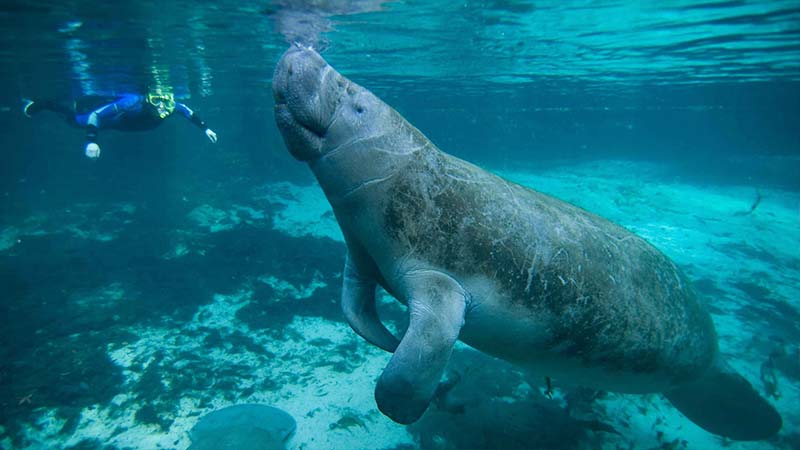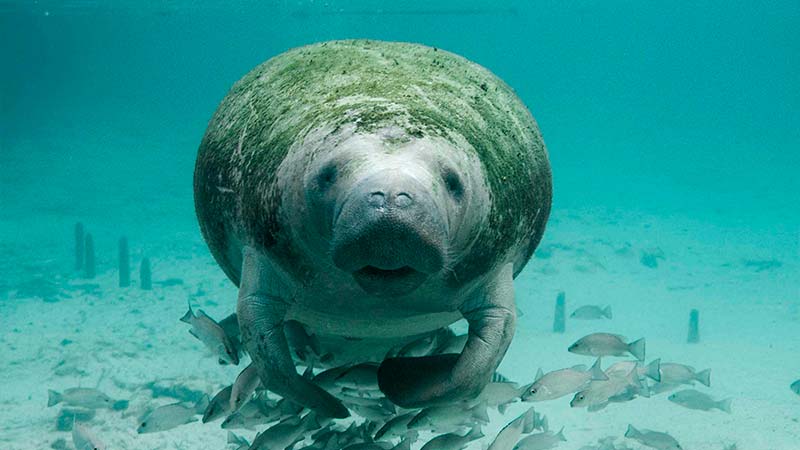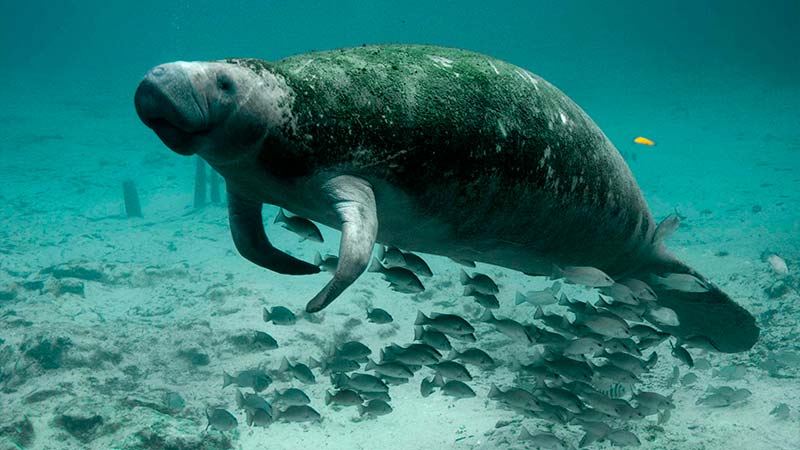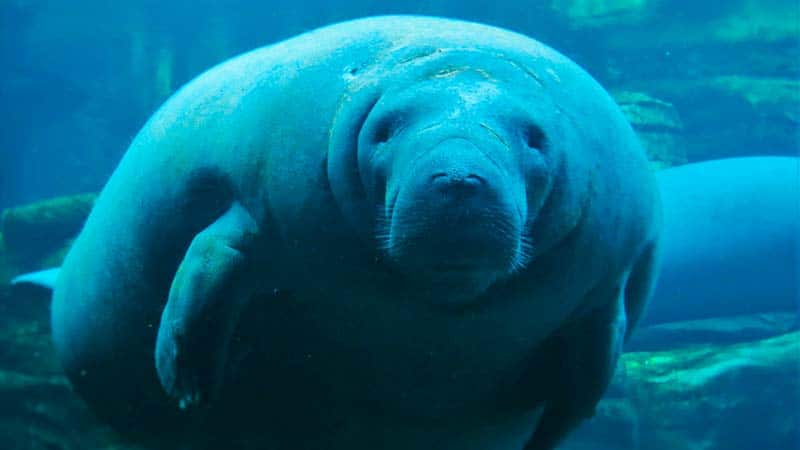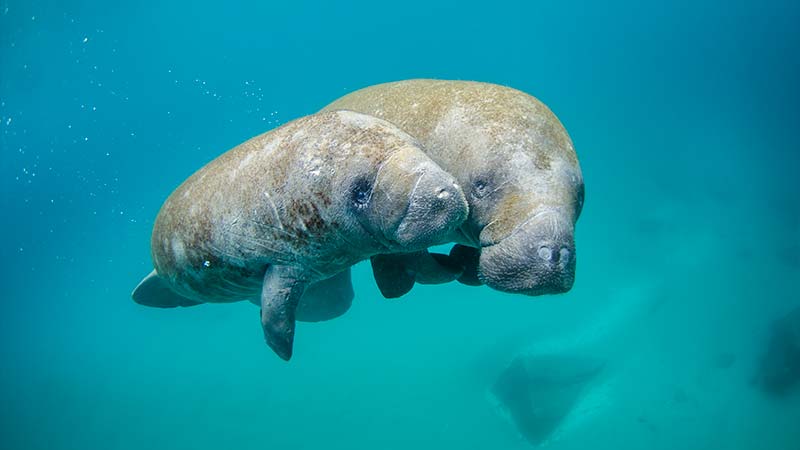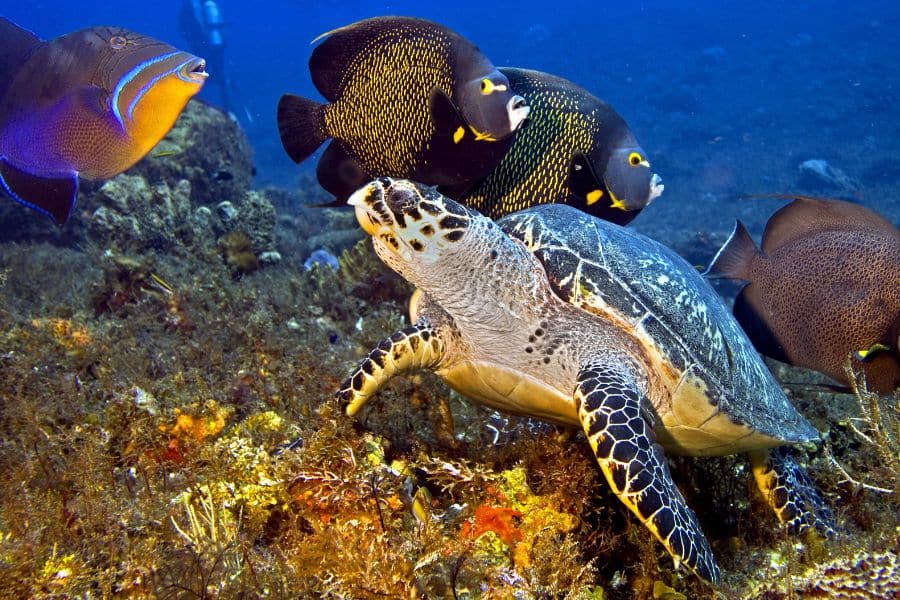Manatee facts are as abundant as legends. Yes, you read that right, and most of them are associated with mermaids.
“On the previous day [January 8, 1493], when the Admiral went to the Rio del Oro [Haiti], he said he saw three mermaids very clearly, which rose well out of the sea; but they are not as pretty as they are said to be, for their faces had some masculine traits.” – Christopher Columbus wrote in his logbook.
We all know that Columbus crossed the Atlantic to set foot on what they called a new continent, and what a coincidence! He traveled right through regions of the ocean where manatees live.
It’s not that manatees look much like humans, although from afar they could be mistaken. They have the right size, and they stick their heads and torsos out of the water, thanks to the vertebrae in their neck they can turn them, and, moreover, they have limbs divided into five deformed fingers. As if that weren’t enough, manatees breastfeed their young, often in a vertical position and holding the little one with their flippers, as a human mother would.
Another African legend tells of a young maiden who bathed naked in the river and when she saw men approaching, she jumped to cover her butt with a fan. Due to shyness, she spent the rest of her life in the water, where the fan turned into a tail and she became a manatee.
And so, we can go on telling tales and stories of manatees, who have always been shrouded in mystery. However, thanks to scientific research, manatee facts are gradually being discovered.
Today we’ll tell you about the most diverse curiosities of these herbivorous marine animals that have unique adaptations such as an endless supply of teeth, prehensile flippers, and a metabolic rate that allows them to fast for up to seven months. Check out the table of contents.




